Revolutionizing Customer Retention and Engagement: A ContentShake AI Story
In the ever-changing world of content creating AI tools, it's always a challenge to stand out and retain users.
That's precisely what we faced at ContentShake AI—an AI Writer crafted to empower small to medium businesses (SMBs) with the ability to produce end-to-end optimized content efficiently.
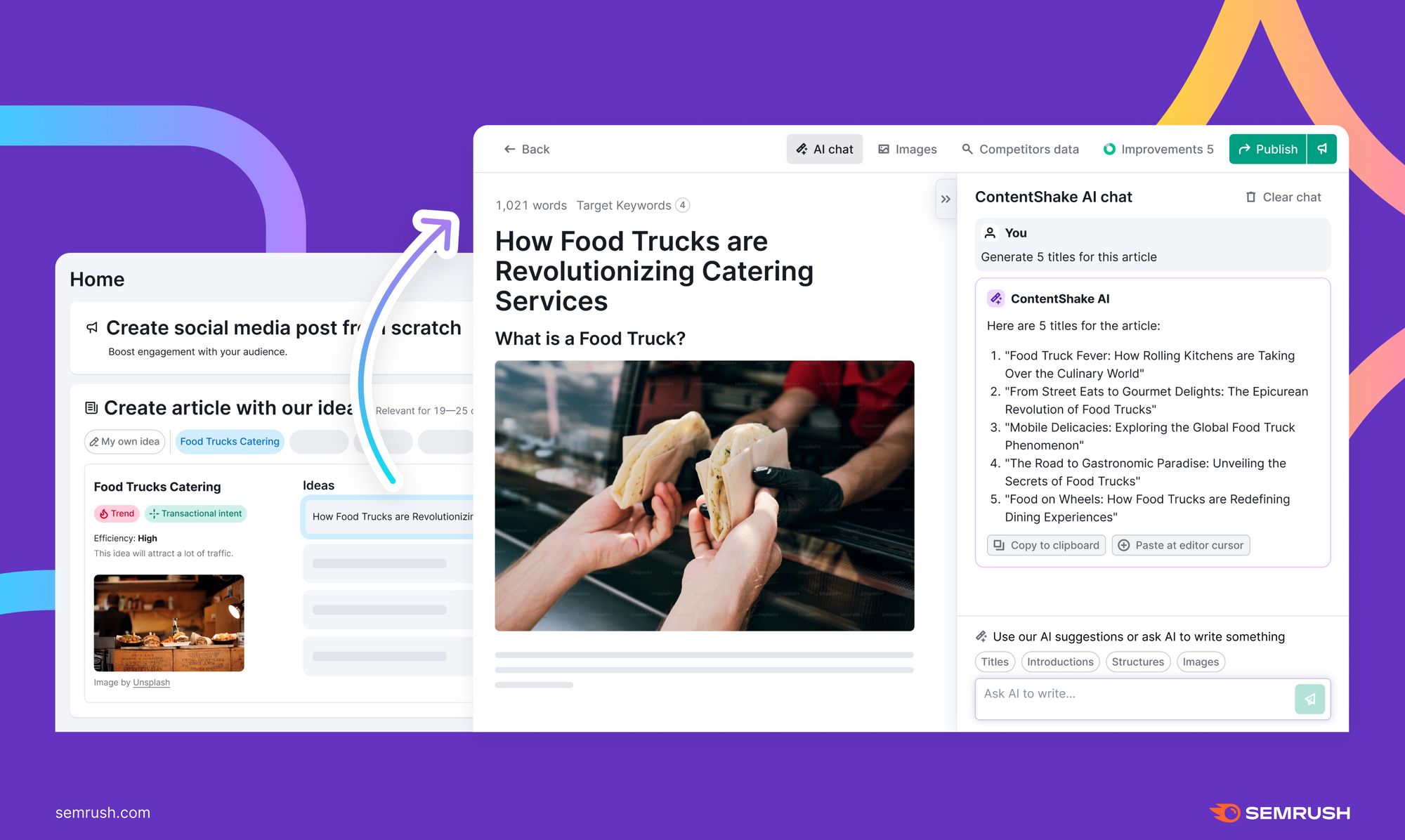
Our platform grew, and so did a crucial problem—balancing user acquisition with retention. In this article, we're diving into the strategies we applied and the insights we collected from reshaping our approach to retain users and improve their engagement.
R for Retention
We learned that while acquiring new users was vital for our growth, ensuring they stayed and engaged with our product was equally, if not more, critical.
Our journey into retention metrics kicked off upon spotting a concerning trend: although our trial launch significantly increased our revenue, we observed a slight but noticeable drop in user retention rates. This wasn't a dramatic plunge, yet it piqued our interest and prompted us to find out why it happened.
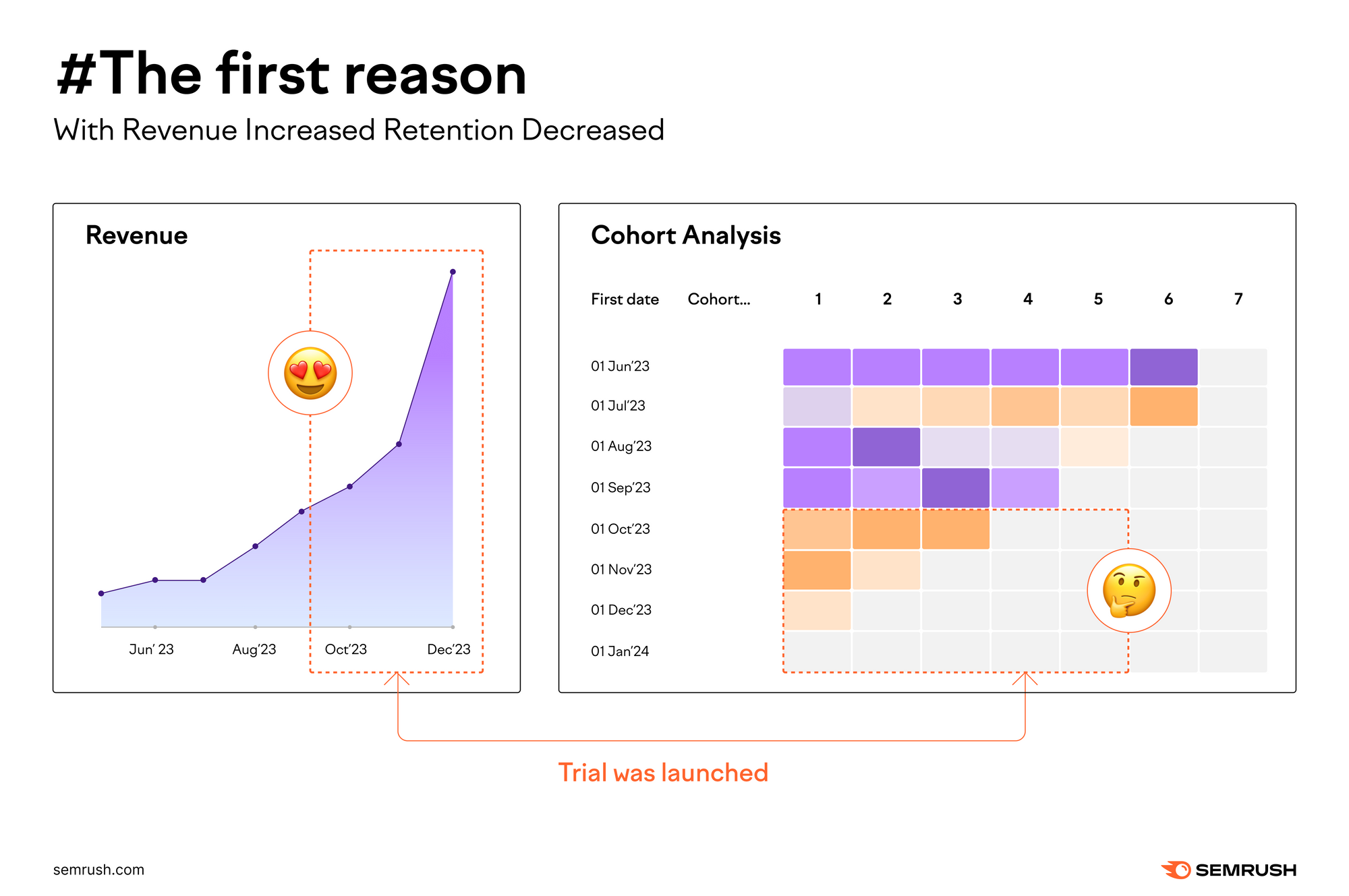
Motivated by this, we turned to strategies from the Reforge course “Retention and Engagement” that highlighted how user habits can be critical and gave us the understanding of diverse user segments in enhancing retention.
Our Findings: Retention Rate
Understanding and Applying Natural Frequency for Improved User Engagement.
We tailored our engagement metrics and strategies to match the real-life usage patterns of different user segments. For small to medium businesses (SMBs), a weekly engagement metric proved most effective, reflecting their periodic content creation needs.
Contrastingly, agencies requiring daily content production are aligned with a daily engagement approach. However, we will only discuss the first case going forward because it is the most crucial for our product.
This nuanced approach to defining and applying natural frequency allowed us to create a more user-centric strategy, ultimately enhancing our product's retention and user satisfaction.
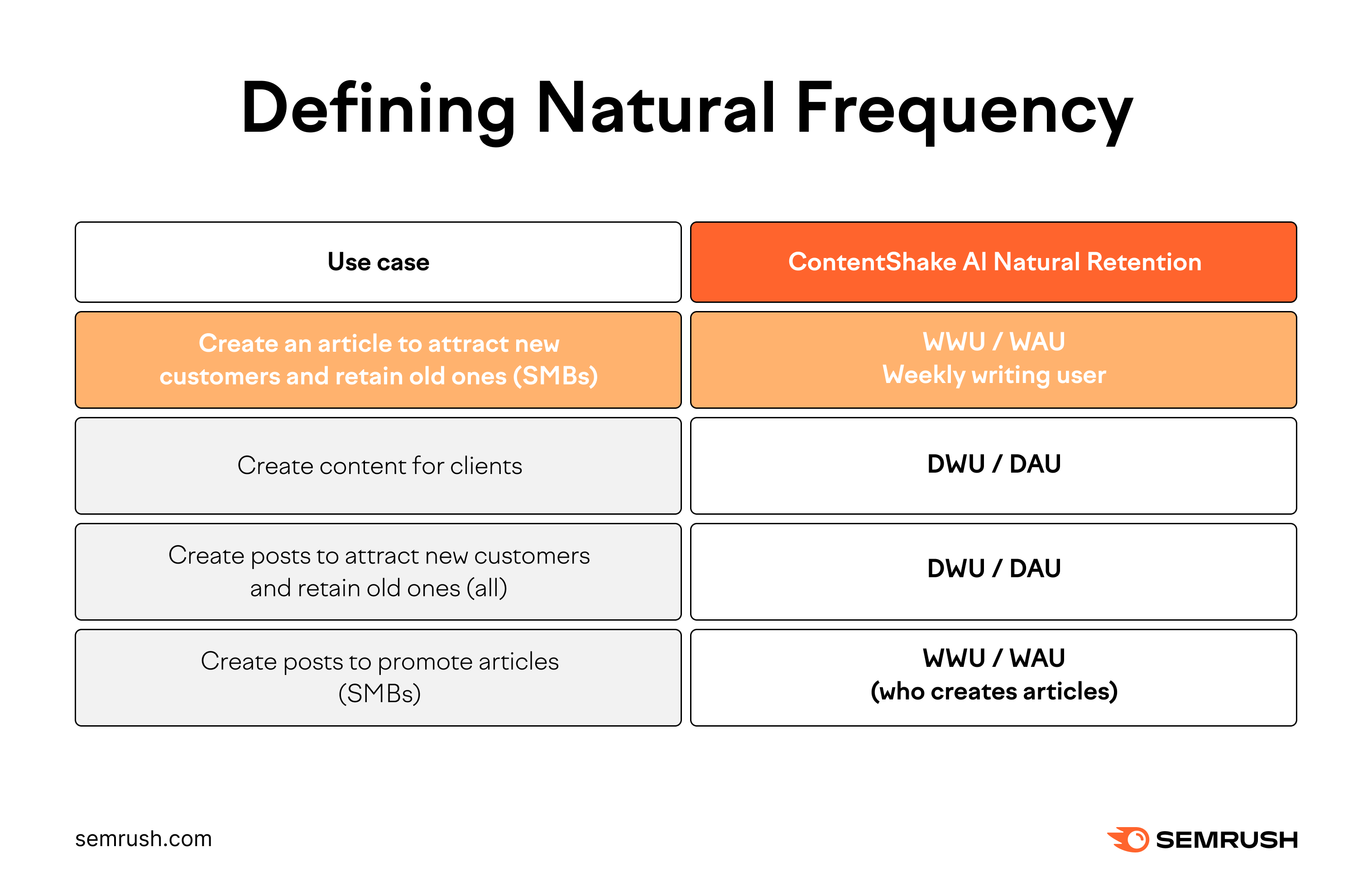
Enhancing Retention with Targeted User Segmentation
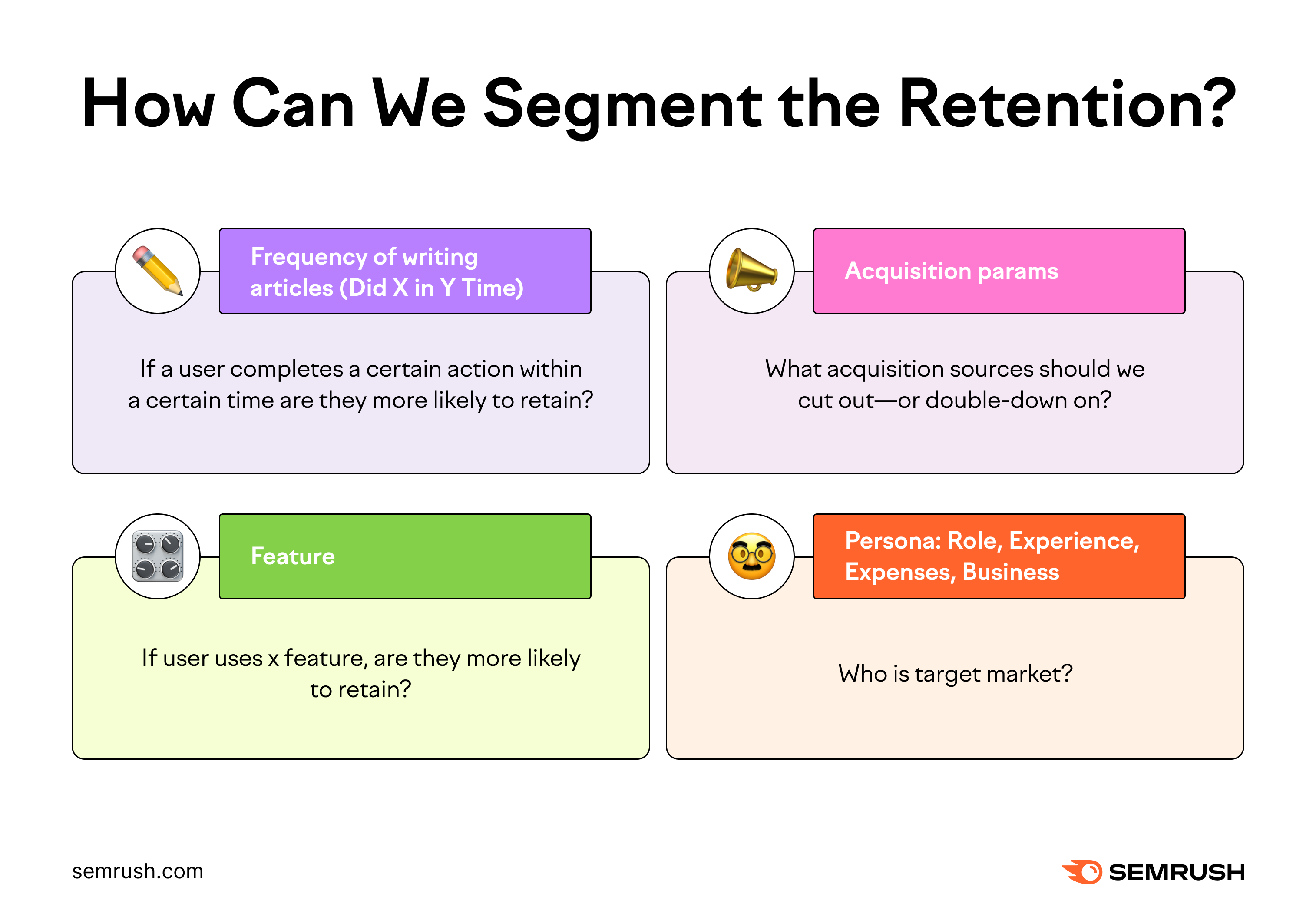
Our strategic segmentation across article writing frequency, feature usage, acquisition touchpoints, and user personas brought invaluable insights into improving user retention:
- High-frequency writers (four or more articles a month) show greater retention, underscoring the value of active engagement
- Features like "Ask AI" and text rewriting significantly boost retention, suggesting the importance of feature utility over visibility
- Users acquired through specific touchpoints (such as anonymous applications) have higher retention rates, which can be used in our acquisition strategy
- Marketers as a user persona return more often, guiding us to tailor features and marketing efforts to this segment
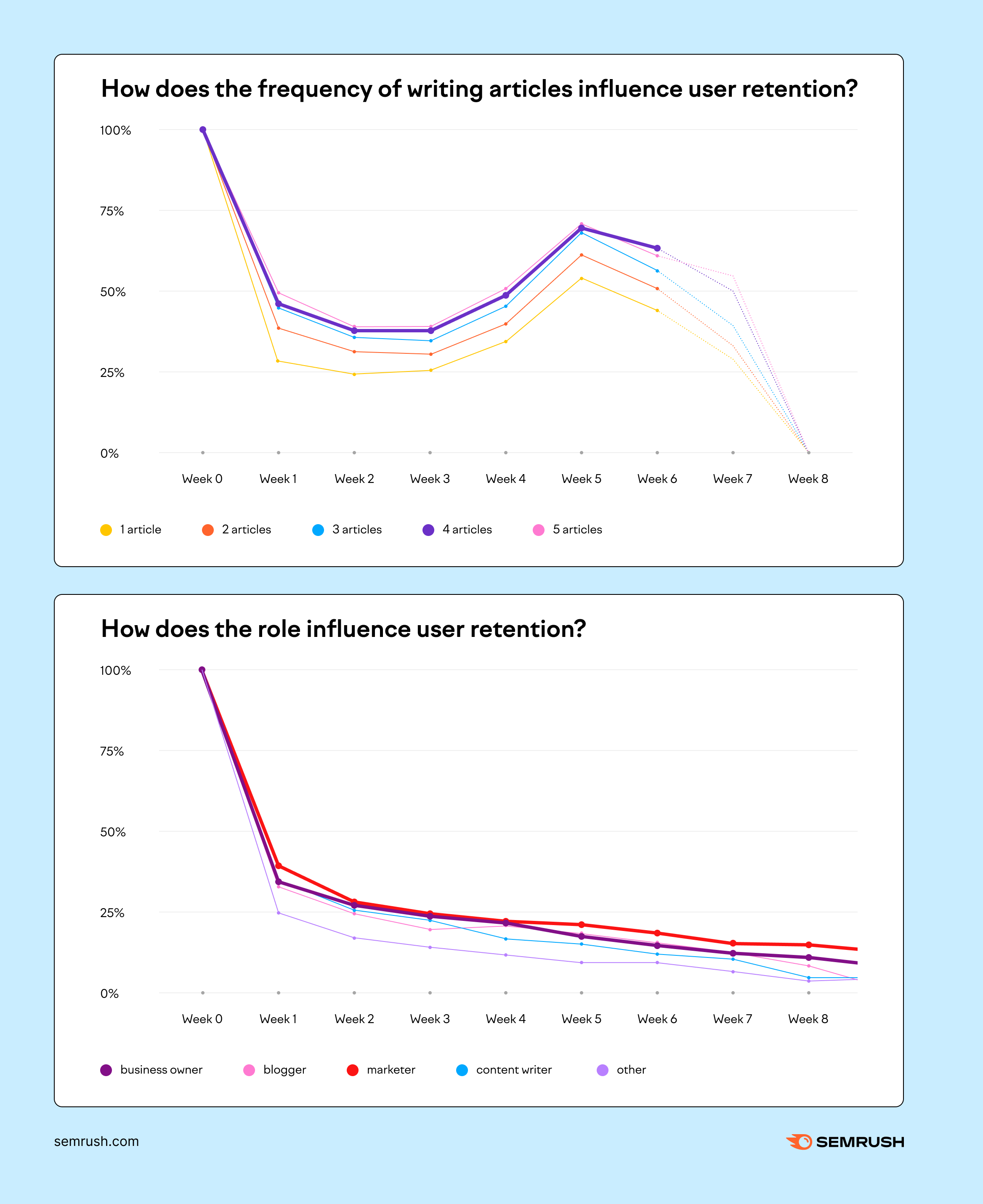
This focused approach not only enhances our current user engagement strategies but also forms the basis for future product development and experimentation. It emphasizes the critical role of segmentation in building a loyal user base.
Next, we'll explore key elements influencing retention, which arise from Activation, Engagement, and Resurrection—the actual areas to enhance for better retention.
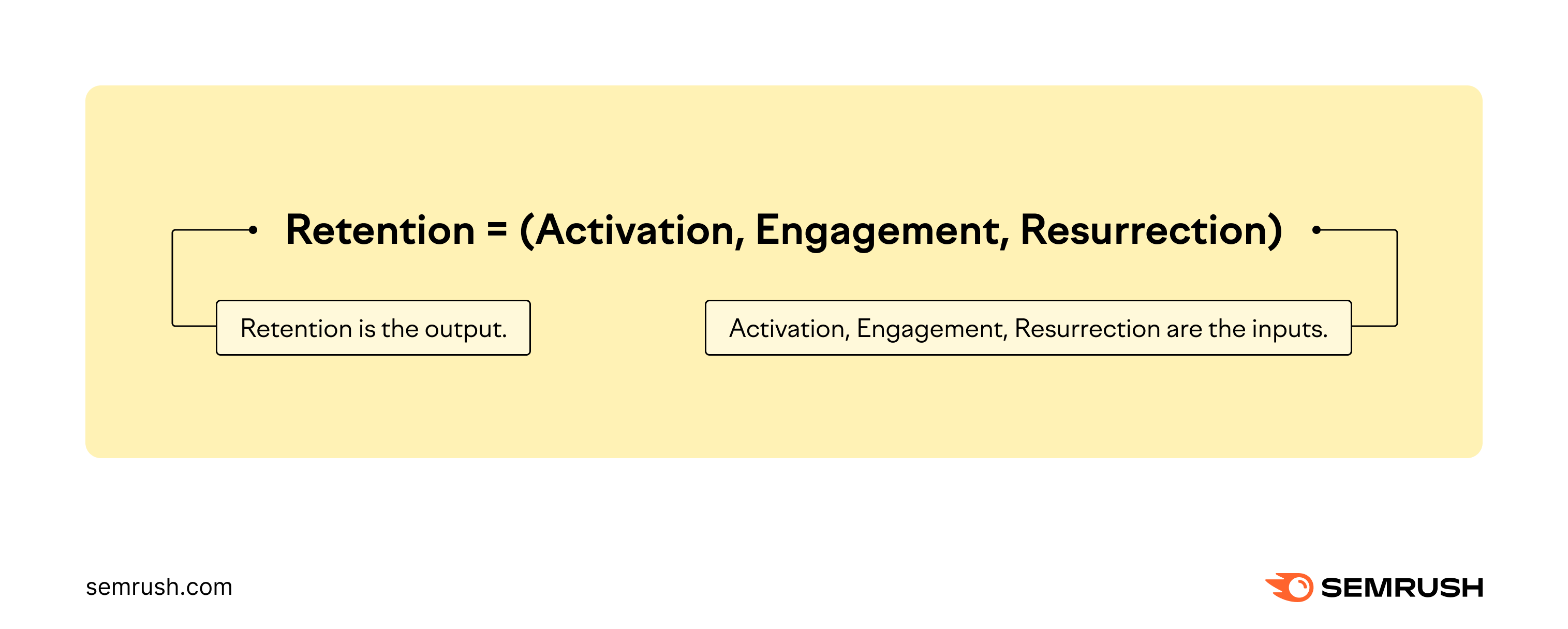
Let’s take a closer look at each of these phases.
A for Activation
Understanding Customer Activation
Customer activation is the turning point when a prospect shifts from observer to engaged user, taking a desired action like making a purchase or signing up for a service. It's crucial because it reaches EVERY acquired user, unlike other parts of the funnel. Successful activation drives immediate revenue and fosters long-term loyalty.
How To Identify User Flow
Identifying the user flow involves analyzing product usage frequency and grasping its core value. First of all, you need to understand that the product's core value pinpoints the "AHA!" moment when users recognize its benefits. The setup process consists of the steps that the user must take to configure the product before obtaining the core value. And of course, we want our users to come to our product and interact with it more, that’s when they develop a habit of multiple repetitions of their flow.
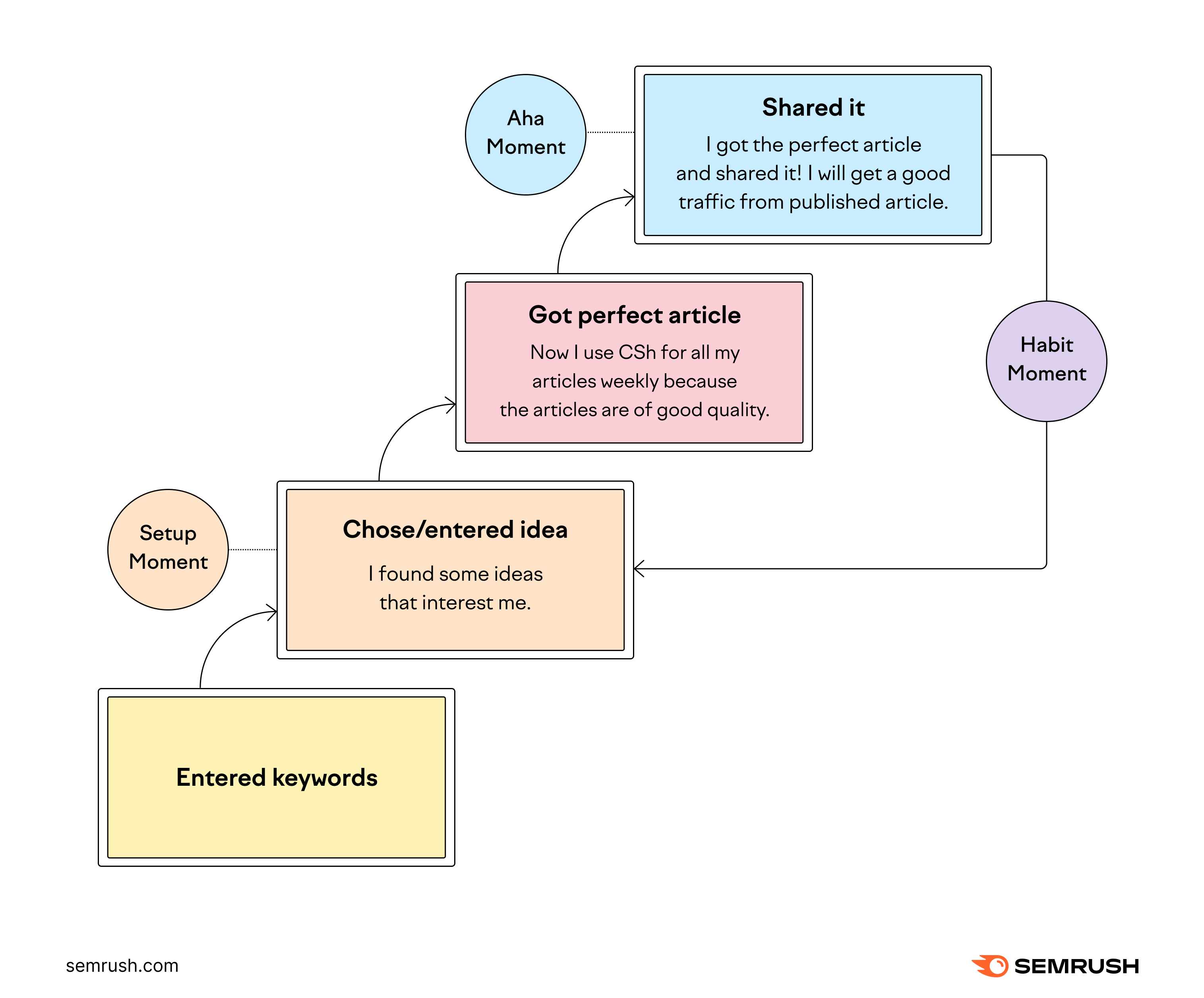
Analyzing the Flow
We need to evaluate how much effort each step requires from users and compare it to the energy they have available. This determines whether each step feels like an uphill or downhill battle. If a step demands more effort than users can muster, they're likely to drop off.
The Psych Framework, developed by Darius Contractor, helps assess users' energy levels and the energy consumed by each step. Throughout the flow, certain activities drain users' energy, creating negative psych moments. These can be physical, like filling out frustrating forms, or cognitive, like making decisions without guidance. To counteract this, we can incorporate elements that add positive psych, such as:
- Fit Alignment: Signals that the product aligns with users' needs and expectations
- Rewards: Demonstrates the value users will gain
- Motivational Boosts: Small incentives that lead users toward value, like trust indicators such as reviews, testimonials, and logos
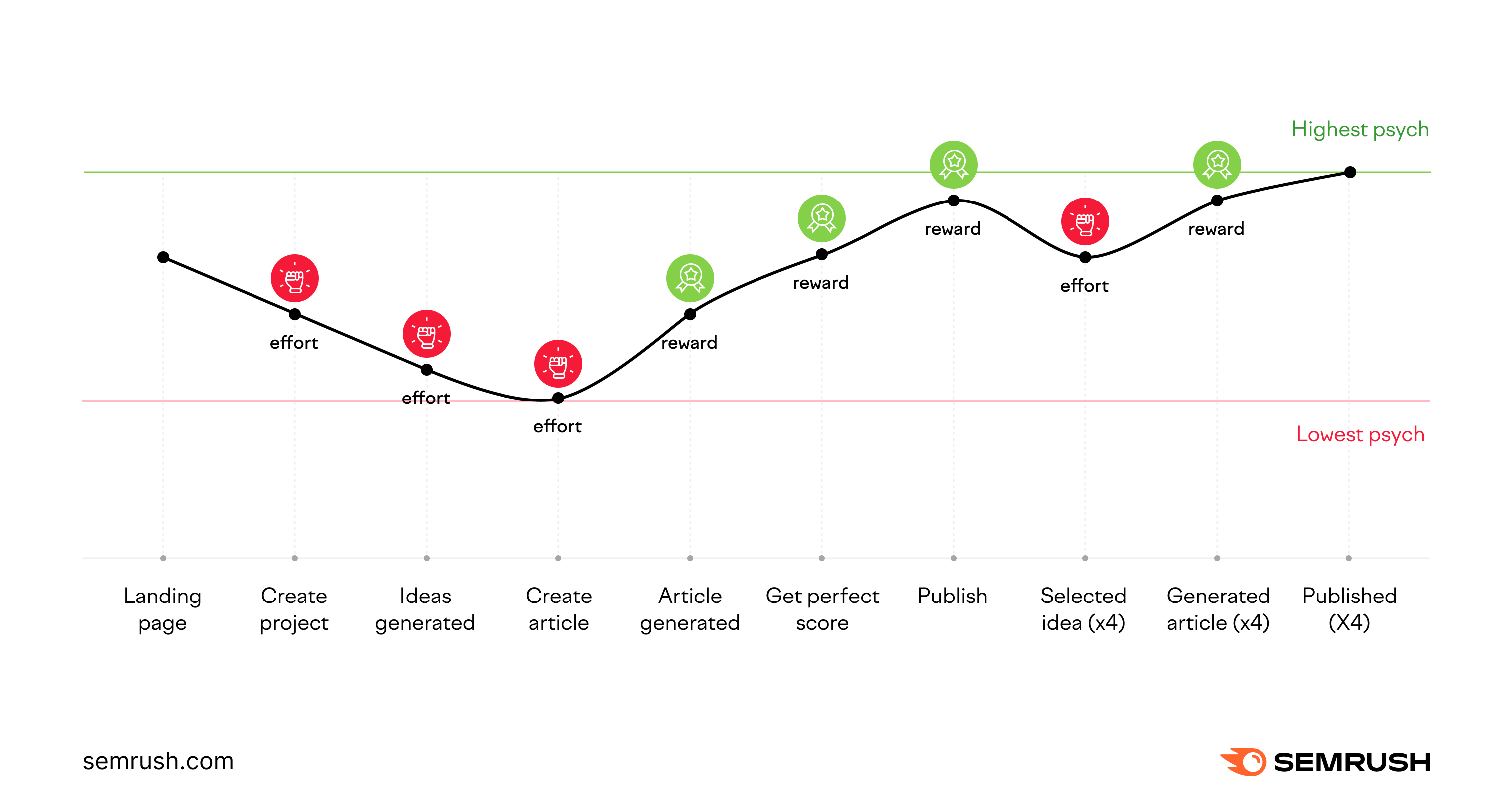
Framework analysis revealed a drop in the initial phase of the process, making it clear we need to refine the ContentShake AI’s setup. But what could we do exactly?
Best Practices for Improving User Experience
We want to create the right experience for our users with the help of Reforge PNIP Pyramid:
- Product
- Notifications (such as emails, push notifications, SMS, and browser notifications)
- Incentives (rewards that accelerate or enhance the product and notification experience)
- People (individuals who support customers, their success, and their overall activation experience)
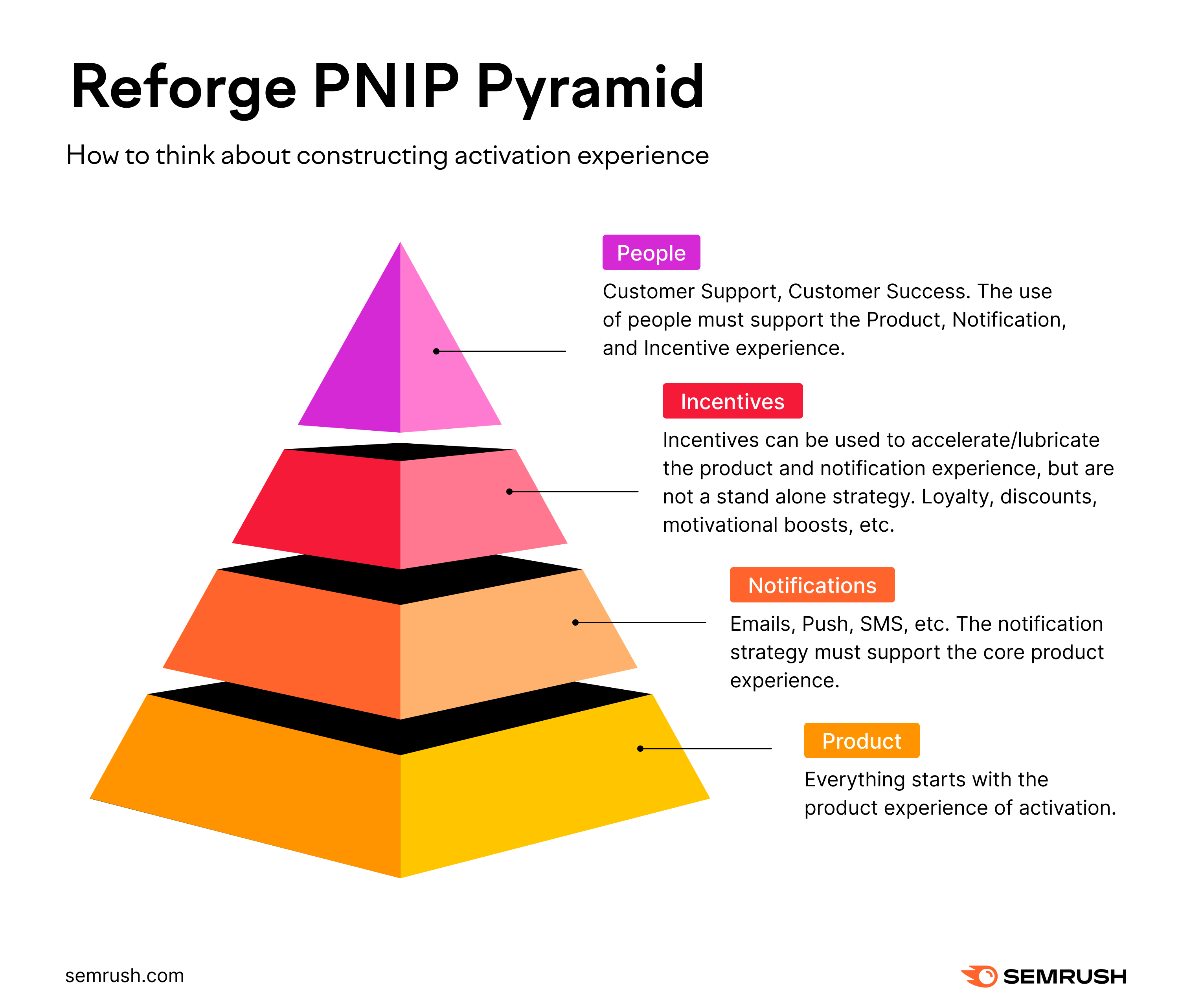
We've formulated hypotheses to enhance the user journey, aligning changes with user needs for a more engaging experience in all four dimensions.
According to the findings of our analysis, we have identified areas for improvement. These specifically focus on hypotheses related to enhancing email notifications as well as refining the first session experience and onboarding process for our users.
These hypotheses serve as actionable guidelines for implementing strategic changes that align with user needs and preferences. Ultimately, this can lead to a more seamless and engaging user experience.
E for Engagement
It’s important to think about measuring engagement as being on a spectrum of depth. When we talk about an engaged user state, it's not a 1 or 0, rather, it's somewhere on a spectrum. To do this, we need to break ‘engaged’ into a few different sub-states that help us look at different categories of usage.
Strategies to deepen engagement:
- Adding use cases
- Increasing the use frequency of the product
- Increasing the feature usage, or what we call feature spread
- Increasing the intensity of each use of the product
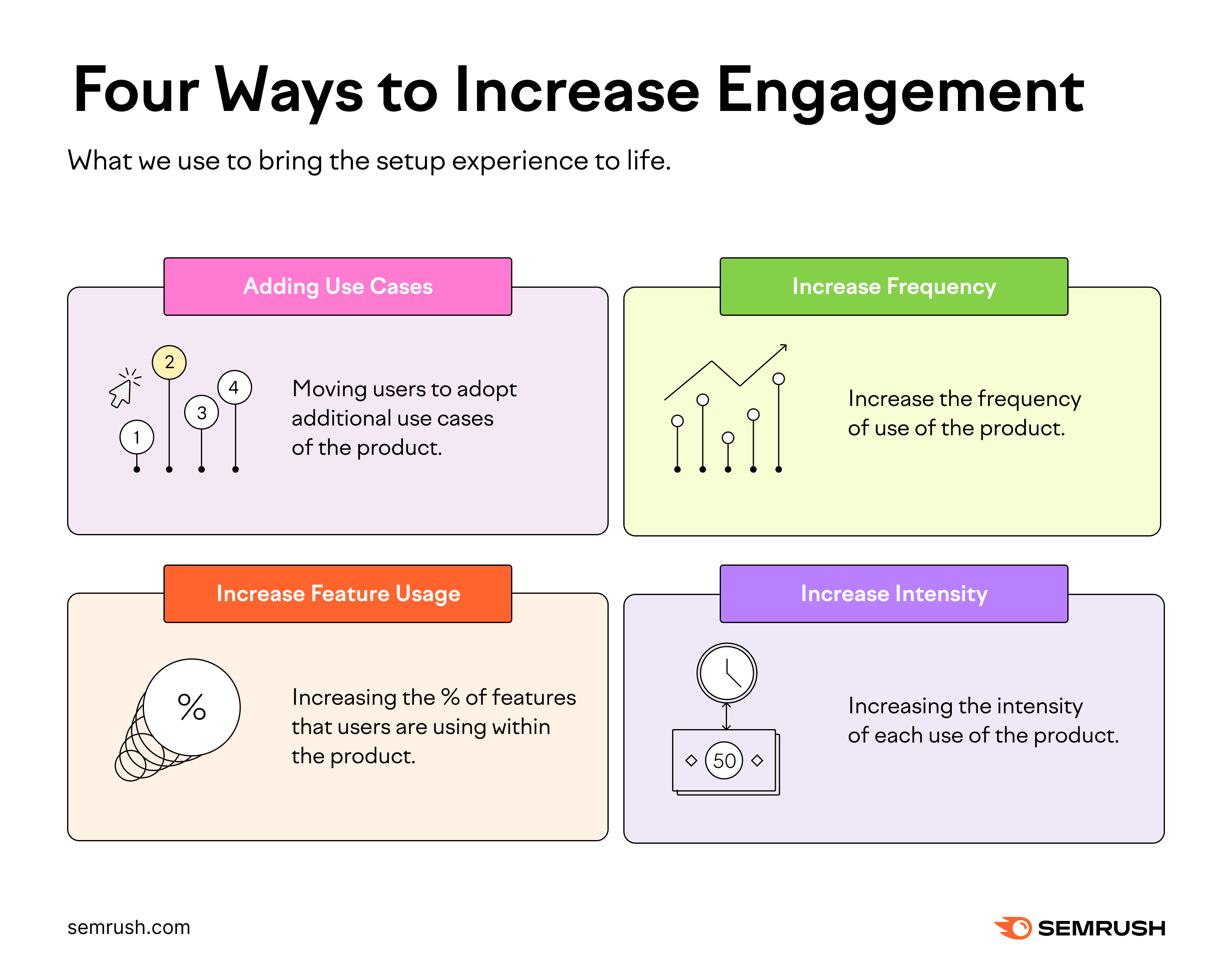
Adding Use Cases
ContentShake has two different use cases:
- Creating article
- Writing SMM post
A user who takes advantage of these different use cases would have far greater engagement, and far greater frequency, than somebody who only wrote 1 type of content.
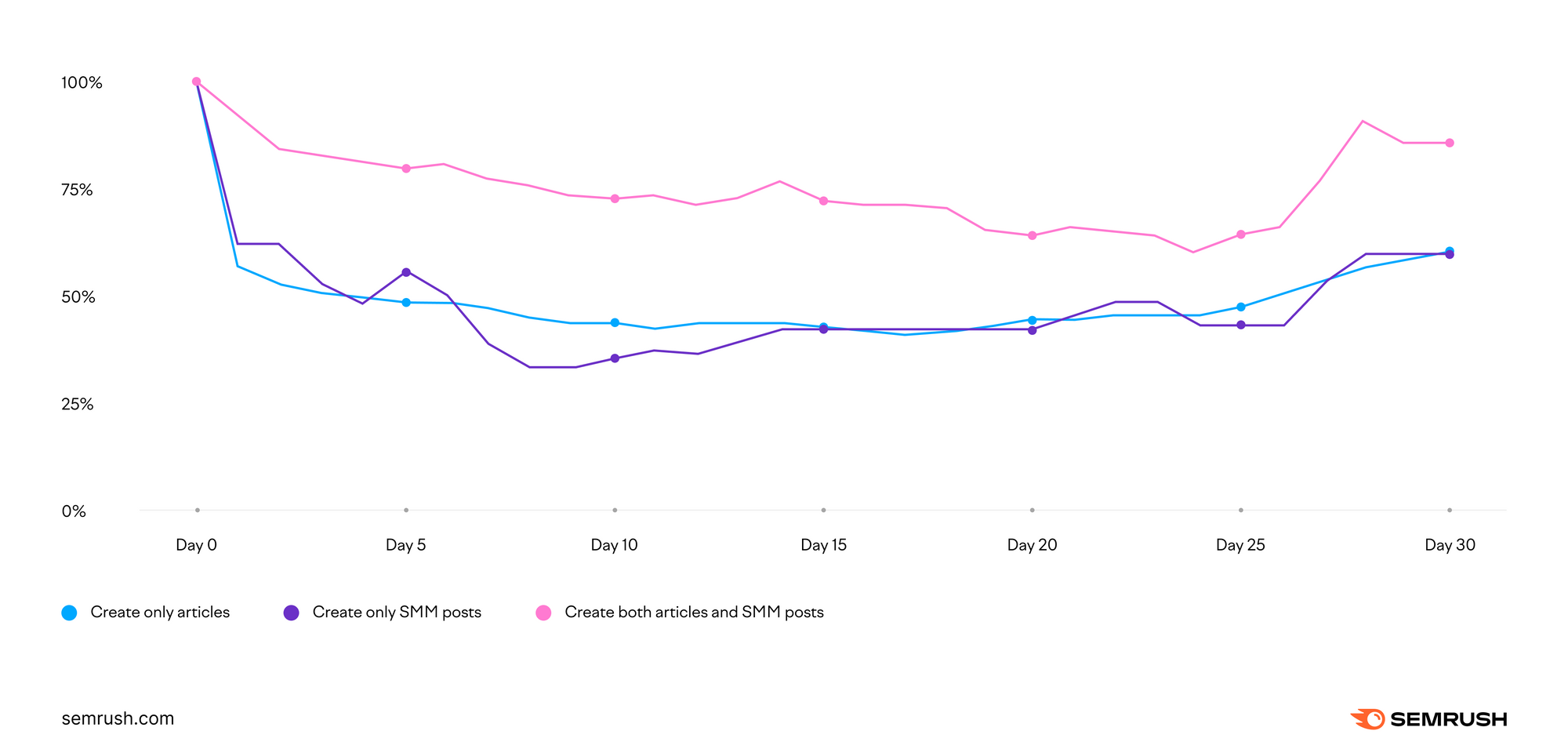
The main point here is that users don't necessarily enter with all use cases in mind. They enter with the idea of one use case, and they can enter at any different point. You can then layer on the additional use cases over time to deepen that engagement.
Increase Frequency
The second engagement strategy involves maximizing interaction frequency within a natural timeframe. By recognizing users' habits and patterns, businesses can integrate tactics like timely notifications or reminders. This approach boosts engagement without disrupting the user experience, fostering long-term satisfaction and retention.
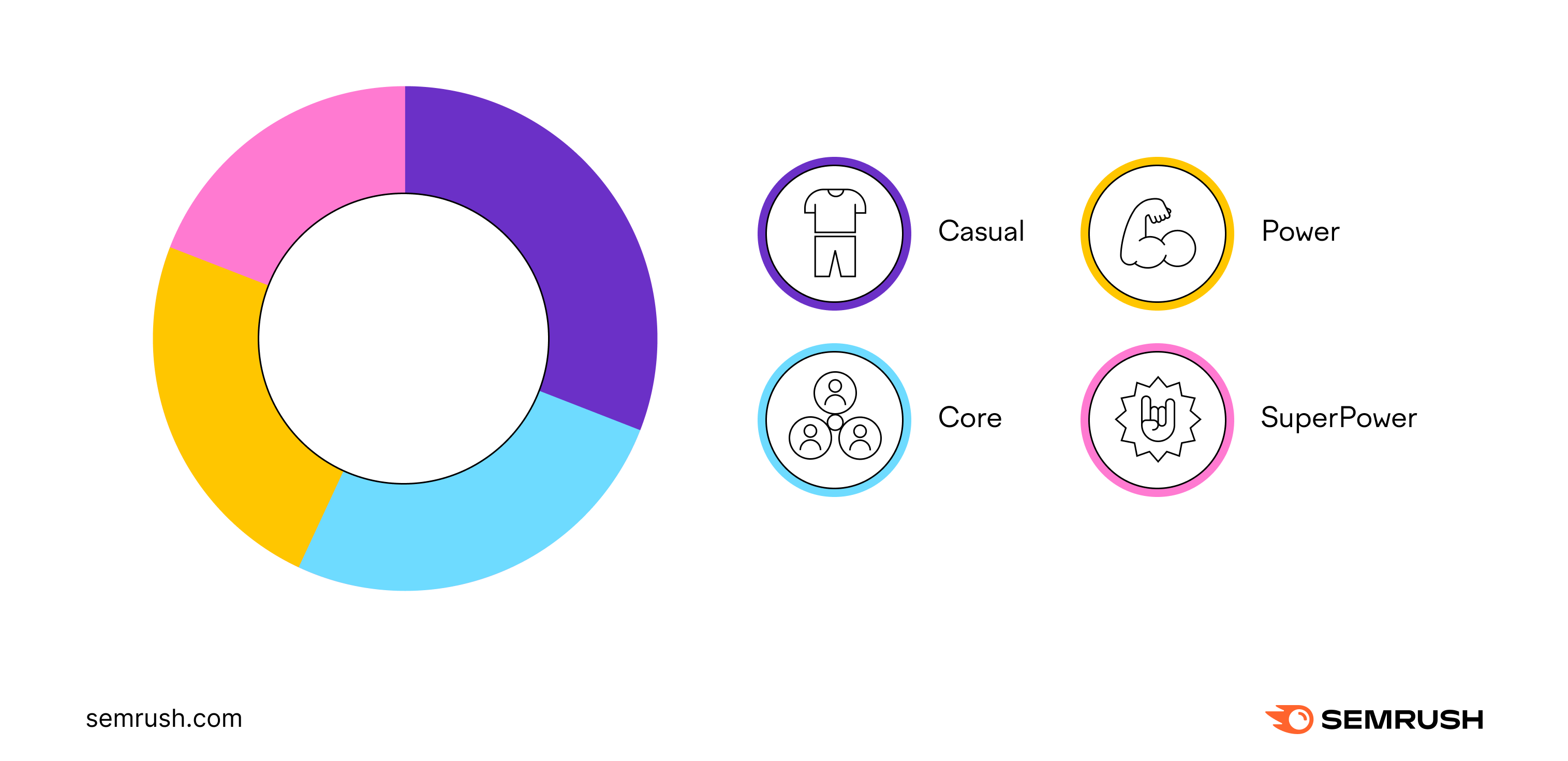
Increase Feature Usage
The takeaway here is that within a use case, there tends to be a surface area of features. We can think about a number of different features that enable each use case.
We have to be careful when we increase feature usage because this strategy can lead to churn; if users see a number of other features they aren’t using, this can be mentally taxing for them. So be mindful when using this strategy.
Increase Intensity
Every time a user engages with the product reflects the level of intensity in its usage. There are three different forms of intensity:
- Time
- Money
- Actions
But this type of strategy doesn’t align well with ContentShake AI monetization, so we didn’t review it in depth.
Conclusions
Revamping our approach to retention and engagement at ContentShake AI was a journey that required us to peel back the layers of our user interaction and really understand what keeps our users coming back. The insights we've gained are not just numbers on a chart; they are real-world affirmations of our efforts to understand and cater to our users more effectively.
Short Conclusion for Designers: The Power of User Activation Flow
As designers, we frequently focus on the immediate impacts of new features, judging their success through metrics like new payments or general retention improvements.
However, emphasizing user activation flow highlighted a crucial perspective shift. Often, we might assess a feature's performance in isolation, disconnecting it from the broader context, which rarely moves the needle on business metrics or provides meaningful insights.
Understanding activation analysis and segmentation has been a game changer. It offers a more systematic approach to uncovering where users genuinely find value and which channels promote lasting engagement. This broader viewpoint encourages us, whether as Product Designers or in any other role, to look beyond individual metrics and understand our product and user behavior more holistically.
Short Conclusion for Product Owners: Unlocking Engagement
It's important to realize that our customers aren't all the same. They have different preferences, habits, and ways of using our product. Instead of treating them as one homogenous group, we can categorize them based on their differences. Consequently, we can tailor our product to meet the specific needs of each group. This not only makes our product more appealing but also helps us build stronger relationships with our diverse customer base.